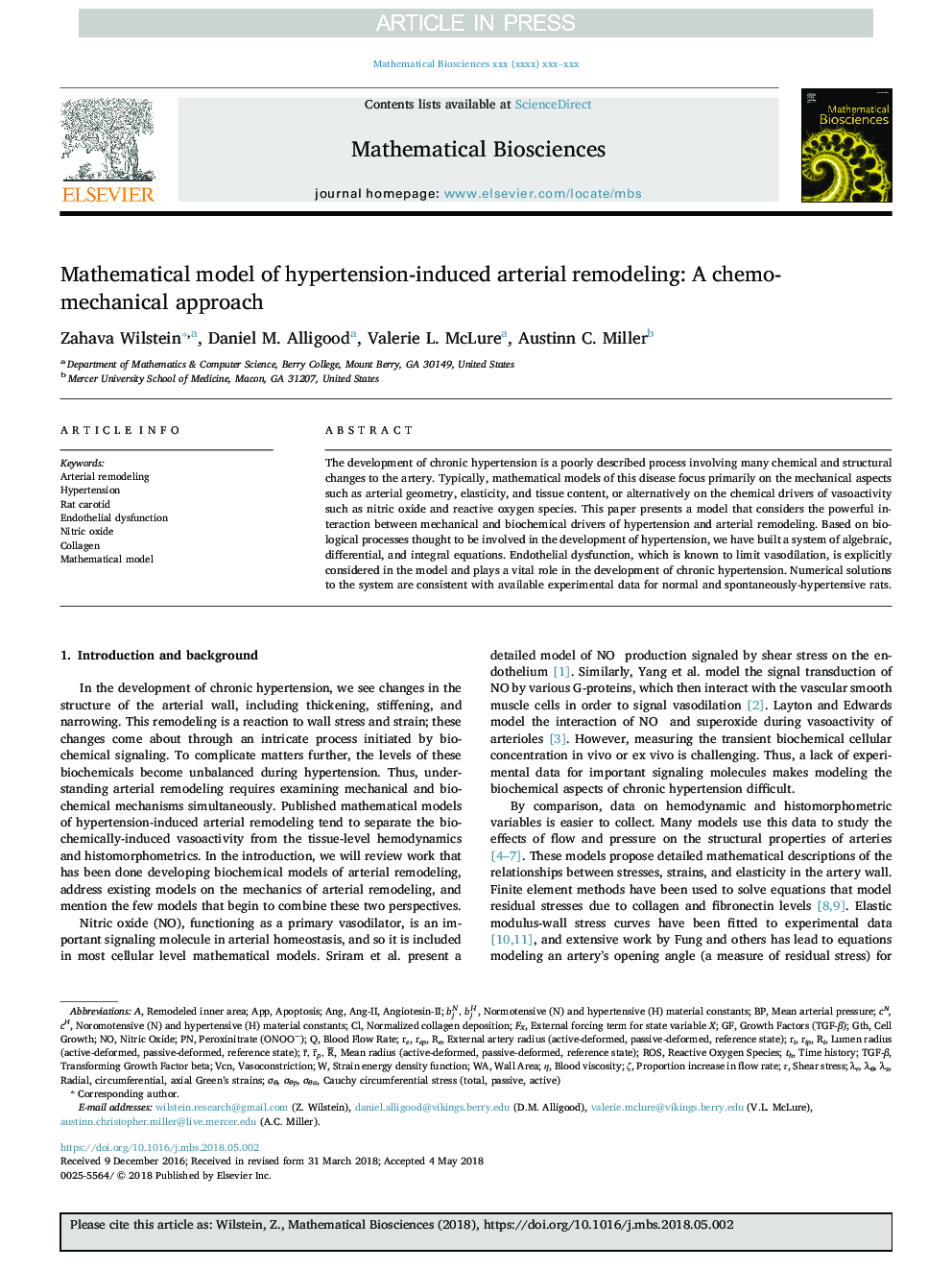| Article ID | Journal | Published Year | Pages | File Type |
|---|---|---|---|---|
| 8876947 | Mathematical Biosciences | 2018 | 16 Pages |
Abstract
The development of chronic hypertension is a poorly described process involving many chemical and structural changes to the artery. Typically, mathematical models of this disease focus primarily on the mechanical aspects such as arterial geometry, elasticity, and tissue content, or alternatively on the chemical drivers of vasoactivity such as nitric oxide and reactive oxygen species. This paper presents a model that considers the powerful interaction between mechanical and biochemical drivers of hypertension and arterial remodeling. Based on biological processes thought to be involved in the development of hypertension, we have built a system of algebraic, differential, and integral equations. Endothelial dysfunction, which is known to limit vasodilation, is explicitly considered in the model and plays a vital role in the development of chronic hypertension. Numerical solutions to the system are consistent with available experimental data for normal and spontaneously-hypertensive rats.
Keywords
TGF-βRat carotidAPPGTHVCNvasoconstrictionROSEndothelial dysfunctionStrain energy density functionTime historyTransforming Growth Factor Betaarterial remodelingShear stressBlood flow rateApoptosisCell growthHypertensionmean arterial pressureMathematical modelwall areaNitric oxideBlood viscosityCollagenReactive oxygen species
Related Topics
Life Sciences
Agricultural and Biological Sciences
Agricultural and Biological Sciences (General)
Authors
Zahava Wilstein, Daniel M. Alligood, Valerie L. McLure, Austinn C. Miller,
